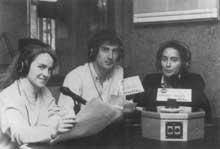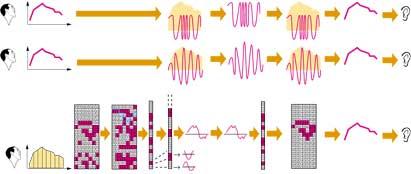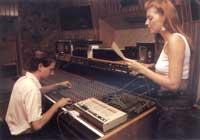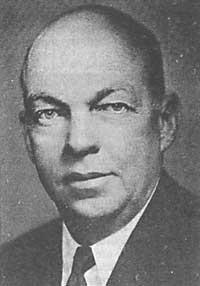Radio FM, is there a future?
1992/02/01 Otaolaurretxi, Jon Iturria: Elhuyar aldizkaria
However, before starting to mention these advantages, it is advisable to briefly indicate the operation of the AM and FM systems. In both systems electromagnetic waves are used for broadcasting, modulating the amplitude and frequency of one of them. Both use a “carrier” electromagnetic wave to send radio signals from the station to the receiver. The difference is encodable. Like any other wave, the electromagnetic ones have frequency (number of vibrations per second in the hertz) and amplitude. Modulation consists of modifying one of these parameters in the carrier wave.
AM system

When amplitude is modulated (in the AM system), the emitted wave is modulated intensity. For example, the sound signal contained in the microphone induces electrical voltages and the wave is modulated according to the variations of such electrical voltages.
AM system transmissions are the oldest and technically easy to achieve. They occupy a fairly narrow frequency band, but receive many parasites and interferences. Interference is due to everything produced by the electromagnetic wave (fluorescent lamps, electric motors, electric car installations, etc. ). On the other hand, as you move away from the sender you weaken. However, the broadcast in am is heard on the radio receiver but full of parasites.
In addition, the presence of parasites in the AM system makes the sound that is recomposed in the receivers have only frequencies of 50 to 6,000 Hz and the capacity of human hearing between 20 and 20,000 Hz. Therefore, high tones of sound are mainly lost.
FM system
The following errors are corrected in the system where the frequency or FM will be modulated. Here the frequency of the wave is modified according to the voltage variations produced by the sound. The power of the emitted wave remains constant and it is easier to transmit signals without the influence of parasites.
The distance between the transmitter and the receiver also does not influence the quality of the sound that is heard if the receiver is in the receiver enclosure. In theory, FM broadcasts are heard very well or not heard. This is common in car receivers. When you are listening well, the word goes away. In addition, in the carrier wave phase, the transmission quality can sometimes be affected, especially when it is about to move to zero.
However, because fm frequencies are much higher than am frequencies, a more complete sound is transmitted, that is, encompassing the entire range encompassing the human ear between 20 and 20,000 Hz. In addition, a second carrier wave (or “subejemplar”) can be emitted at a higher frequency to transmit a stereo sound.
Nowadays FM is the only system that allows you to listen correctly to the sound, but simply activate the receiver tuner to realize that there are too many stations. Being a narrow frequency band for FM, the emitters are very close to each other and a transmitter produces noises to its neighbor. For example, when traveling by car, it's hard to hear a program throughout the trip (if it's a long one) with good quality. To do this, you should increase the power of current stations or add more repeaters. However, the repeater needs a new frequency, as it cannot emit at that same frequency, which further satisfies the already full frequency band.
IC or numerical broadcasting
In numerical broadcasting, these AM and FM obstacles are easily surpassed. In this system neither amplitude nor frequency is affected. Whether or not there is a sign is taken into account. It's like a morse.
In addition, numerical (or digital) techniques are increasingly used in the production and recording of programs. It is therefore interesting to have digitized recordings, stations, transmissions and receivers (the entire chain from creation and sound emission to listening at home), thus obtaining the quality of the laser compact discs.
The CCETT (Centre commun d’etudes de télédifusion et télécommunications) in Rennes (Brittany) has prepared a system of these characteristics. Named DAB (Digital Audio Broadcasting) or numerical sound broadcasting.
In this system, if it is a carrier wave, neither amplitude nor frequency is modulated. The signal is encoded in binary numbering and is a succession of “0” and “1” (0” = no signal and “1” = if there is a signal). This way the distance or environment of the receiver does not distort. Although the wave is very weak or parasitic, if the receiver identifies it, it will reconstruct the message in high and clean.
To encode the sound numerically it is necessary to act as to record compact discs. The sound must be divided in some way (about 48,000 parts per second) and measured each part. Each part or sample is measured by an analog/digital converter. That is, it measures the voltage in volts and gives the result in binary numbers.
The converter is a balance to weigh. The weights placed on the balance plate become fragments of volts instead of kilos. Indicates the “weight” the converter has used in each measurement. The “weights” are staggered in the complete remodeling of number 2. The voltage is 107 millivolts, for example, with binary numbers gives “1101011” indicating whether there are powers of 2 6 to 2 0 or not. First there is “1”, so you have to count 26. Then there is “1”, therefore also 2 5. Below is indicated “0” so there are no 2 4, etc. So in the end we have: 2 6 + 2 5 + 0 + 2 3 + 0 + 2 1 + 2 0 = 107. To encode our number 107 we have used seven “weights” or bits and to measure higher values it is necessary to use more bits.
Using eight bits, values from 0 to 255 can be given with the unit jump. It is said that the signal has been encoded with an accuracy of 1/256. However, if more bits were used, greater precisions would be obtained.
This precision refers to the signal/noise ratio, which normally occurs in decibels on hifi devices. The application in decibels is done by multiplying the decimal logarithm of precision by 20. Using 8 bits in our example you get about 48 decibels. In compact discs they use 14 bits and the accuracy is 1/32768. In decibels, 90.3 (that’s why audio device manufacturers say the signal/noise ratio is “above 90 dB”).
However, in this attempt to improve the accuracy and quality of the sound, the radio has its limitations regarding the number of signals that can be transmitted. Like the compact disc, for the transmission of the stereophonic program by the numerical system, 768,000 bits should be emitted twice per second (768 kilo-bit per channel). Encoded in 16 bits (14 in encoding and 2 in control) should be weighed and emitted 48,000 samples. Technically this can be done, but only one transmitter should keep the entire frequency band and the network would be immediately full.

Note: To see this photo you can go to the pdf.
Trying to compress signals
The most important work of CCETT is to reduce or “compress” the number of signals emitted in numerical broadcasting without damaging the sound quality. For this they have split from two themes. On the one hand, the numerical signals cover all the sounds collected by the studio microphones and, on the other, the human ear cannot receive all kinds of sounds. The human ear is limited to frequencies between 20 and 20,000 Hz and although it receives two consecutive sounds with an interval of hundredths of a second, it feels them as a single sound. When it receives two sounds, one of high intensity and one of low intensity, it only distinguishes the sound, since the other has been disguised. In other words, CCETT researchers know that despite eliminating many types of signals, the listener can receive a sound of the same quality.
Therefore, the most difficult work engineers now have is the realization of an electronic “compressor” that removes unnecessary data (and only these). However, in their research they have obtained surprising results: 85% of the encoded information is useless! Therefore, the compressor called “Musicam” reduces the set of audio signals from 768 kbit/s to 128 kbit/s, always maintaining the quality of the sound in front of compact discs.
At a meeting held in Stockholm, about sixty professionals of very good hearing met, who, listening to the music recorded with Musicam, created live and barely appreciated differences from what was heard.
It can also be said that maintaining the same sound quality on compact discs, it can be fixed by recording up to six times less signals. That is, the compact disc with a recording hour can last six hours.
No interference
In numerical radiotransmission the parasites are easily discarded, but in this work there are their limitations. Normally it is the cities that have the greatest difficulties, since reflecting the radio waves in the buildings produce parasites.
As in optics, depending on the layout and distance between buildings, phenomena of addition or subtraction of waves occur. If the emission and reflected wave are in phase, the amplitude doubles, but if they are in opposition the amplitude is eliminated. In addition to these two extreme cases, of course, there are all intermediate cases. That's why in cities there are areas where you can't hear the wave, either numeric or not. This is clearly manifested in the car.
However, this interference only occurs at a certain frequency at each location of buildings. If there were waves of two different frequencies, there would be no interference. That is why they want several frequencies to be used in numerical broadcasting instead of a single frequency. Separated so that interference is avoided, several wave subcurrents would exist. The information of one frequency would be repeated on the other frequency, and if the whole one was lost the complete information would be obtained.

Another advantage is that, despite having many repeaters, a particular transmitter can always be taken at the same frequency. In numerical broadcasting, the repeater can receive and broadcast signals at the same frequency. On the one hand, the frequency band is not filled and on the other, the power of the stations can be lower. But perhaps the main advantage, especially for car radio receivers, is that only one frequency is used for the entire territory occupied by each radio station.
In the future what?
In France this system is tested in Rennes and is expected to extend to France by 1995. To do this, they still have to miniaturize the integrated program decoding circuits on the receivers, so that the devices are of similar size to what has been done so far.
They say that numerical broadcasting will be widespread within ten years. Initially it will compete with the FM system and for a while both will remain together. Then, as happened with the simple and compact disc of music, the numerical will prevail. And it is that in addition to the radio function at present, it will also assume others. The audio receiver will become a computer terminal and the lyrics of the song you are listening to can be read on screen. You can also print the letter.
Other options are to be able to see on screen photos and maps along with news that is being broadcast by radio, translate foreign programs, etc.

Gai honi buruzko eduki gehiago
Elhuyarrek garatutako teknologia






